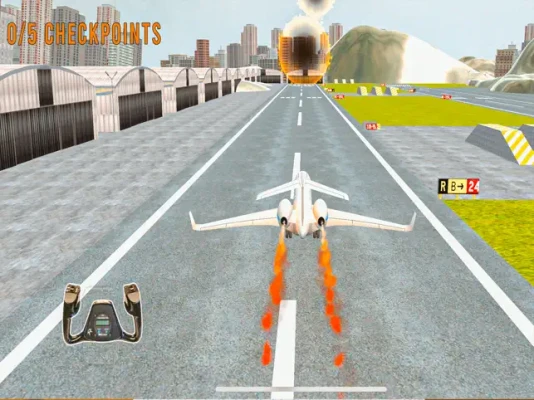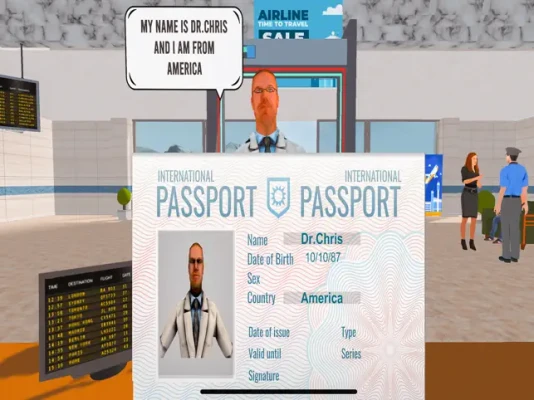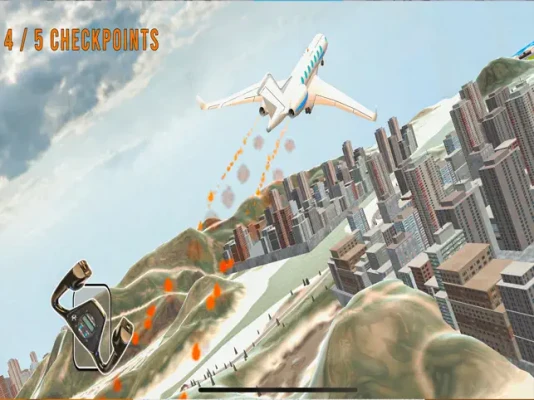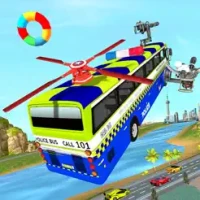
Latest Version
1.1
June 18, 2025
Cockpit Jet Flight Simulator
Games
iOS
306.2 MB
0
Free
Report a Problem
More About Aeroplane Crash Landing Games
Conquer the Skies: Mastering High-Stakes Aviation Challenges
Prepare yourself for an exhilarating journey through the world of aviation, where every flight presents a new set of challenges. From engine failures to unpredictable weather, the skies are filled with obstacles that demand quick thinking and expert piloting skills. This article delves into the diverse emergencies pilots face, the variety of aircraft they must master, and the realistic environments that test their abilities. Get ready to elevate your flying experience!
Diverse Emergencies: Navigating the Unexpected
In the realm of aviation, emergencies can arise at any moment. Pilots must be equipped to handle a multitude of scenarios, each requiring a unique approach. Whether it's a sudden engine failure, severe weather conditions, or malfunctioning systems, the ability to adapt is crucial. Understanding the intricacies of each situation allows pilots to implement effective strategies, ensuring the safety of everyone on board.
- Engine Failures: A sudden loss of power can be terrifying. Pilots must quickly assess the situation, identify the best course of action, and execute emergency procedures to maintain control.
- Extreme Weather Conditions: From thunderstorms to heavy winds, adverse weather can significantly impact flight safety. Pilots need to be adept at reading weather patterns and making real-time decisions to navigate through or around these challenges.
- Malfunctioning Systems: Technical failures can occur at any time. Pilots must rely on their training and experience to troubleshoot issues and utilize backup systems effectively.
Mastering Multiple Aircraft: A Pilot's Versatility
To excel in aviation, pilots must master a diverse range of aircraft. Each type, from nimble single-propeller planes to large passenger jets, presents its own set of handling characteristics and operational requirements. This versatility is essential for adapting to various flying conditions and mission profiles.
- Light Single-Propeller Planes: These aircraft are often used for training and recreational flying. Pilots must develop a keen sense of control and responsiveness to maneuver effectively.
- Hefty Passenger Jets: Operating larger aircraft requires a deep understanding of aerodynamics, weight distribution, and advanced navigation systems. Pilots must be prepared for the complexities of commercial aviation.
- Specialized Aircraft: From cargo planes to military jets, each aircraft type demands specific skills and knowledge. Pilots must continuously learn and adapt to excel in various environments.
Realistic Environments: The Challenge of Diverse Landscapes
Flying is not just about the aircraft; it's also about the environment. Pilots must navigate through stunning landscapes and challenging airports that test their skills to the limit. Realistic flight simulations provide an immersive experience, allowing pilots to hone their abilities in various settings.
- Stunning Landscapes: From mountainous terrains to sprawling urban areas, pilots must be adept at visual navigation and situational awareness to ensure safe landings.
- Challenging Airports: Each airport presents unique challenges, such as short runways, complex approaches, and varying weather conditions. Pilots must be prepared to adapt their landing techniques accordingly.
Intense Decisions: The Art of Strategic Thinking
In the face of emergencies, pilots are often required to make split-second decisions that can mean the difference between a successful landing and a catastrophic failure. The ability to deploy emergency measures, utilize remaining functionalities, and think strategically is paramount.
- Emergency Measures: Knowing when and how to deploy emergency protocols can save lives. Pilots must remain calm under pressure and execute their training effectively.
- Utilizing Remaining Functionalities: In critical situations, maximizing the use of available systems can provide crucial support. Pilots must be resourceful and innovative in their approach.
- Strategic Thinking: Every decision made in the cockpit has consequences. Pilots must weigh their options carefully, considering both immediate and long-term outcomes.
Unlock and Upgrade: Elevating Your Piloting Skills
As pilots navigate through challenges, they have the opportunity to earn rewards, unlock new aircraft, and upgrade their skills. This continuous improvement is essential for tackling even more perilous situations in the future.
- Earn Rewards: Completing missions and overcoming challenges can lead to valuable rewards that enhance the flying experience.
- Unlock New Aircraft: Gaining access to a wider range of aircraft allows pilots to expand their skill set and tackle diverse flying scenarios.
- Upgrade Piloting Skills: Continuous training and skill enhancement are vital for staying sharp and prepared for any situation that may arise.
In conclusion, the world of aviation is filled with challenges that require a unique blend of skills, knowledge, and quick decision-making. By mastering diverse emergencies, multiple aircraft, and realistic environments, pilots can elevate their flying experience to new heights. Embrace the thrill of the skies and prepare for the ultimate test of your piloting abilities!
Rate the App
User Reviews
Popular Apps










Editor's Choice





























